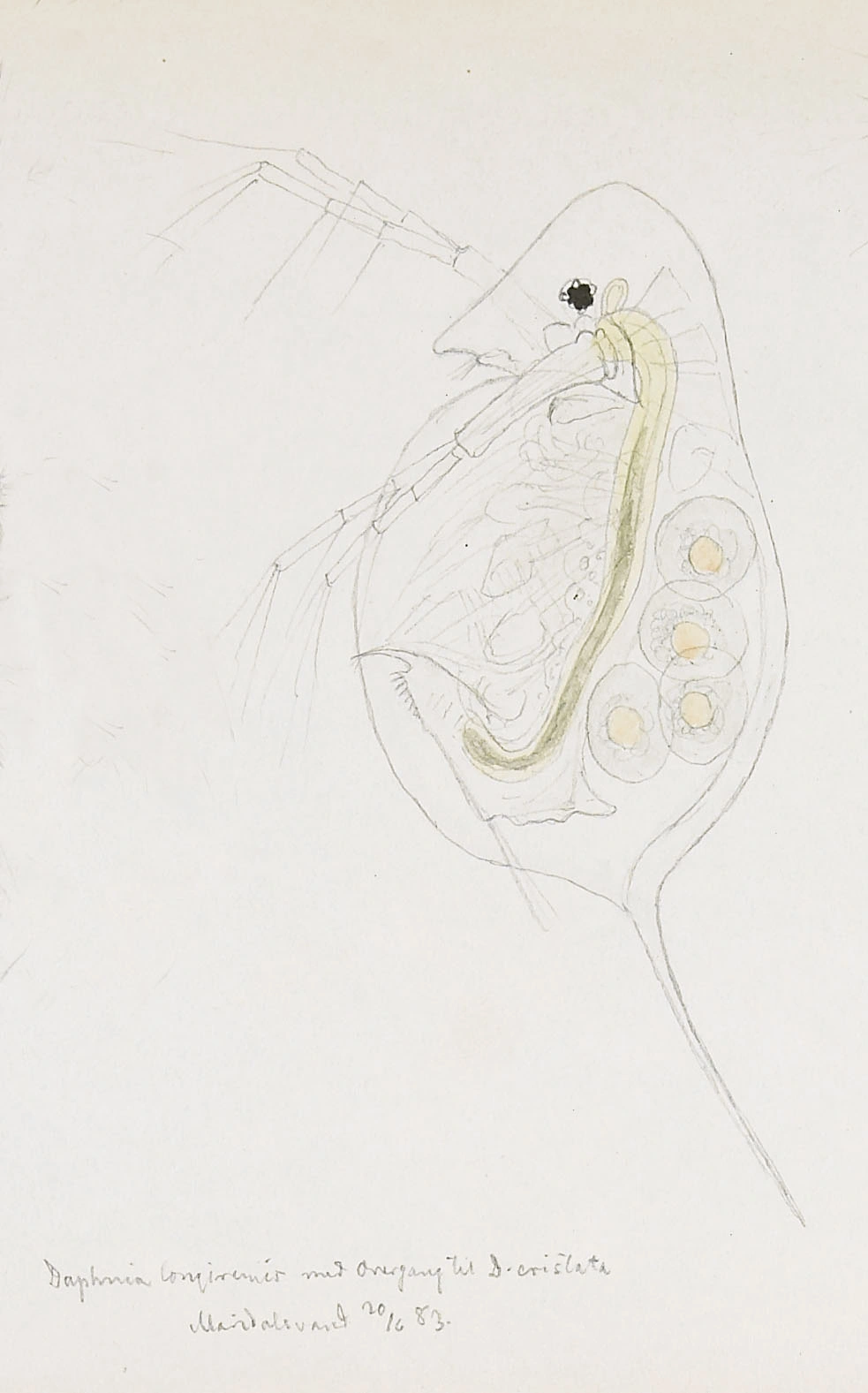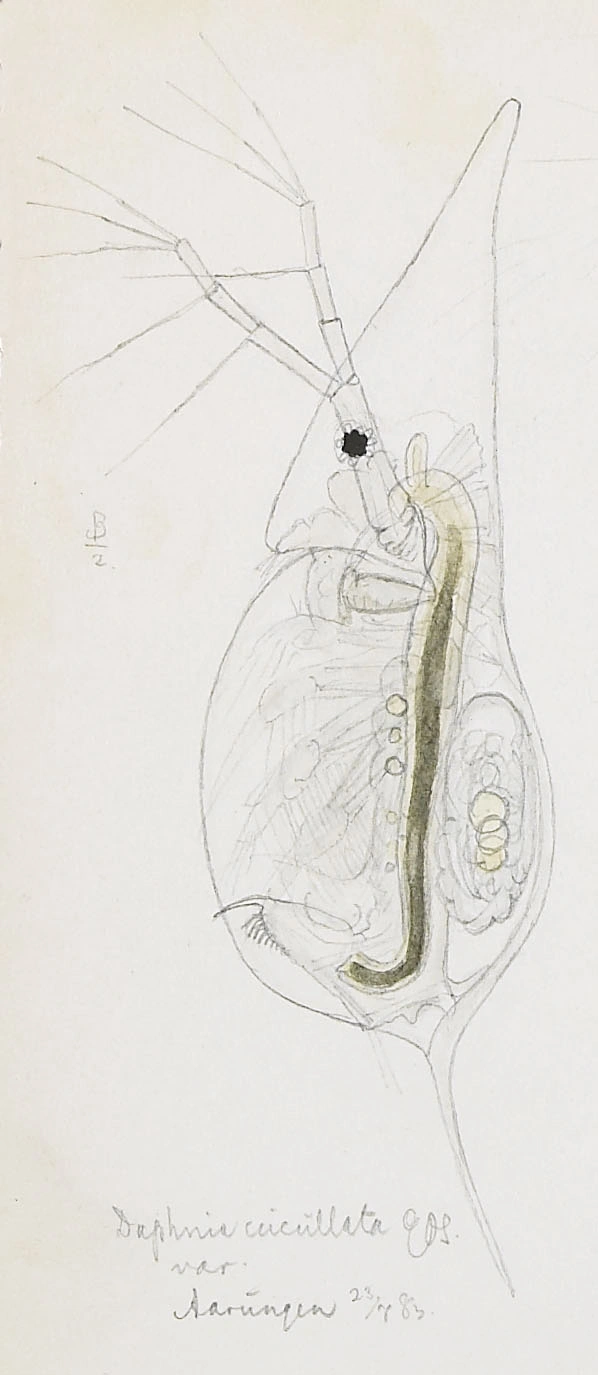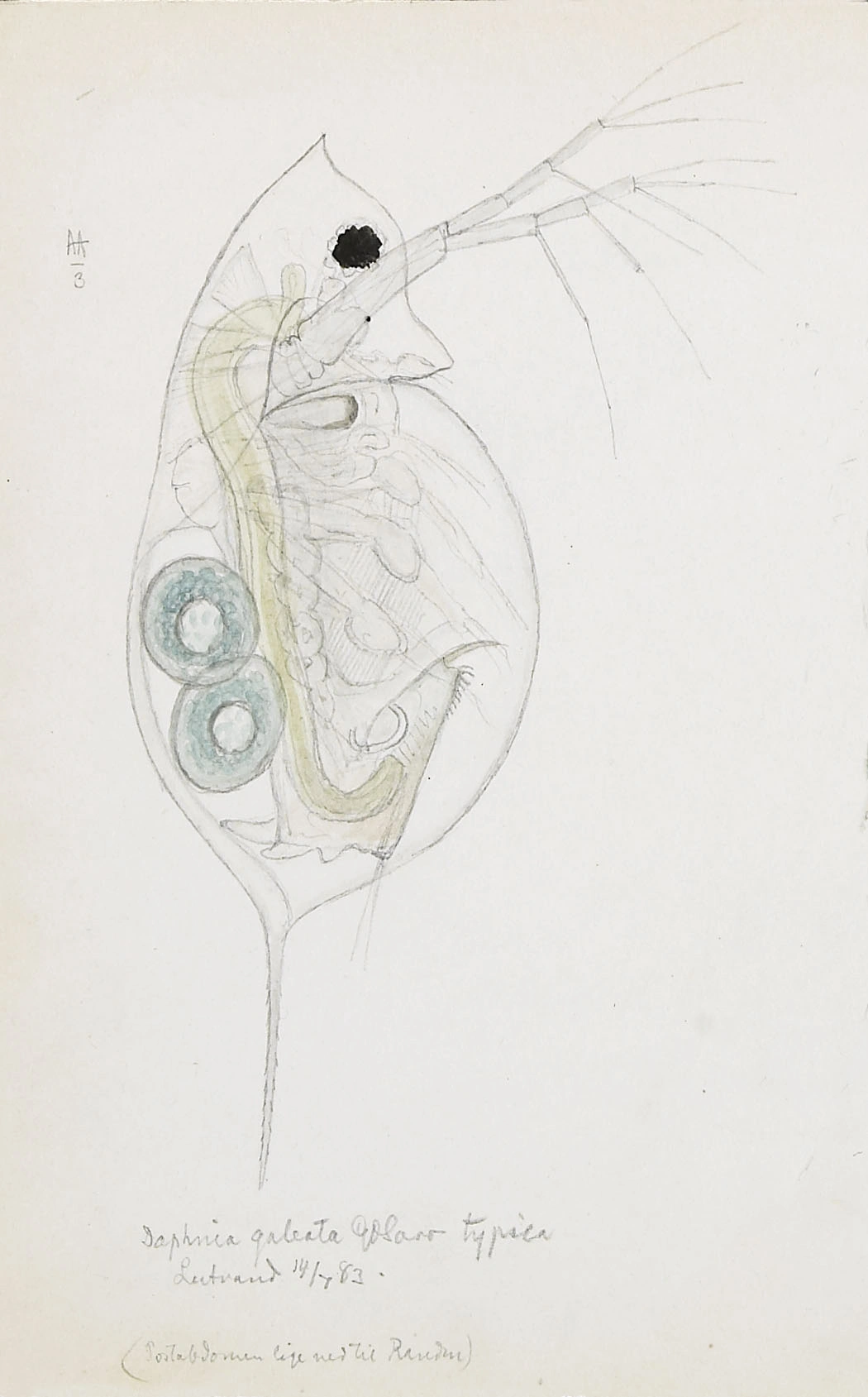Daphnia longiremis
To identify Daphnia longiremis; the bristle on the first joint of the second antennae is about half as long as the bristles fastened to respectively the second and third joint. It has a scattered distribution and is considered as very acid sensitive.
Key characteristics
Daphnia longiremis (female)
Seen from the side Daphnia longiremis can be distinguished from other daphnids by the distinct, though not very deep incurvature which divides its head from the rest of the carapace. Like D. longispina its head doesn’t develop any projections in front. On the contrary cyclomorphosis creates forms including an elongated rostrum (the width of its head is longer than the height). The second antennae is long compared to other daphnids, reaching to the end of the carapace. The bristle on the first joint of the second antennae is about half as long as the bristles fastened to respectively the second and third joint. This is a safe criterion which can be used to identify the hyaline species D. longiremis from all other daphniids.
Female: Length 0.5–2.4 mm
Male: Length 1.2 mm
Ecology and distribution
D. longiremis is less common than other planktonic daphnids. Except for a few records, it has a scattered distribution along the border to Sweden. Nearly all records are from below 700 m a.s.l. It is never found in ponds or ditches (<1da) and the majority of records are from lakes having pH 6.0–6.5. It is found in electrolyte poor water as well as in electrolyte rich water.
| Vitenskapelig navn | < 4,5 | 4,5 - 4,9 | 5,0 - 5,4 | 5,5 - 5,9 | 6,0 - 6,4 | 6,5 - 7,0 | 7,0 - 7,4 | > 7,5 |
|---|---|---|---|---|---|---|---|---|
| 0 | 0 | 1,2 | 1,3 | 4,3 | 0,8 | 0,7 | 2,2 |
| Vitenskapelig navn | < 1,0 | 1,0 - 1,4 | 1,5 - 1,9 | 2,0 - 2,9 | 3,0 - 3,9 | 4,0 - 4,9 | 5,0 - 6,9 | 7,0 - 9,9 | > 10,0 |
|---|---|---|---|---|---|---|---|---|---|
| 0 | 0,4 | 1,9 | 3,8 | 1,1 | 0,8 | 1,6 | 0 | 2,3 |
| Vitenskapelig navn | < 0,01 | 0,01 - 0,09 | 0,1 - 0,9 | 1,0 - 9,9 | 10,0 - 99 | 100 - 999 | > 1000 |
|---|---|---|---|---|---|---|---|
| 0 | 0 | 0 | 0,5 | 2,5 | 2,5 | 2,9 |
| Vitenskapelig navn | < 100 | 100-299 | 300-499 | 500-699 | 700-999 | >1000 |
|---|---|---|---|---|---|---|
| 2 | 2,2 | 3,4 | 1,7 | 0,3 | 0 |
Look-alikes
Daphnia sp exept for D. magna and D. pulex




